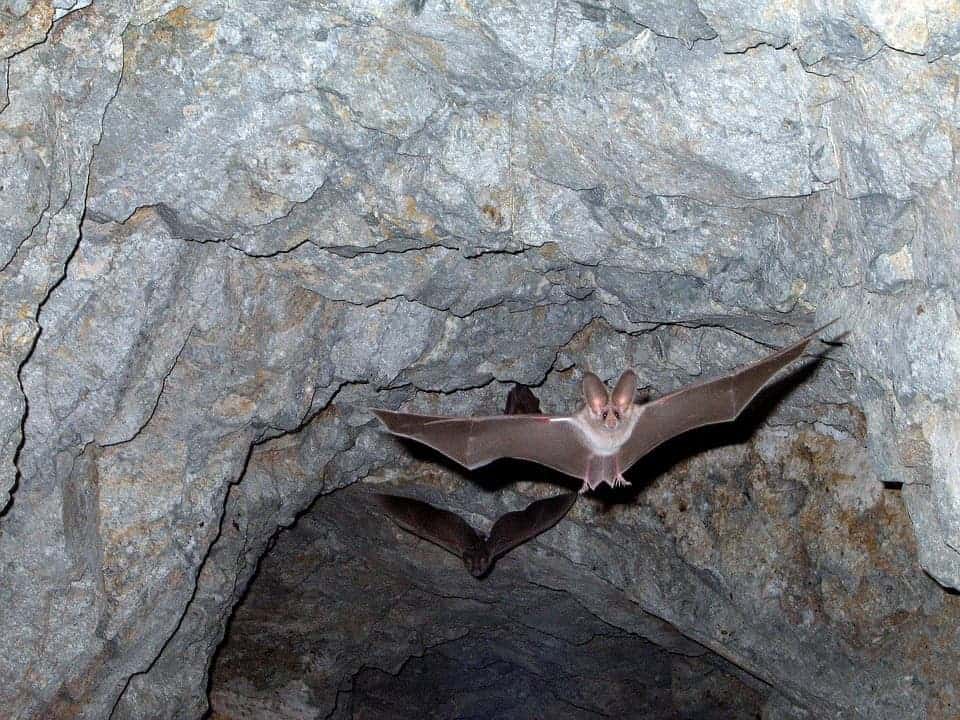Bats use leaves as sound ‘mirrors’ to find (and eat) sneaky insects according to new research.
Even on moonless nights, leaf-nosed bats are able to snatch up insects resting still and silent on leaves. New research from the Smithsonian Tropical Research Institute (STRI) shows that bats pull off this seemingly-impossible feat by approaching packs of leaves from different directions. This gives them the chance to use their echolocation to find camouflaged prey — even prey that specifically tries to hide from the acoustic surveys.
I spy with my little ear… a bug
“For many years it was thought to be a sensory impossibility for bats to find silent, motionless prey resting on leaves by echolocation alone,” said Inga Geipel, Tupper Postdoctoral Fellow at STRI and the paper’s lead author.
Combining data from an experiment using a biosonar with video footage from high-speed video cameras of bats approaching prey, the team found how critical approach angle was to the leaf-nosed bats’ hunting prowess.
Bats can drench an area in sound waves and then listen in on the returning echoes to survey their environment. It works much like a radar that uses sound instead of radio waves, and is undoubtedly a very cool trick to pull off. However, it’s not infallible: leaves are very good sound reflectors, so they drown out the echoes produced by any insect hiding in a patch of leaves. This natural cloaking mechanism is known as acoustic camouflage and makes the insects, for all intents and purposes, undetectable for the bats.
At least, that’s what we thought. To understand how bats pick out prey through the acoustic camouflage, the team aimed sound waves at a leaf (with and without an insect) from over 500 different angles. Using this data, they created a three-dimensional representation of the echoes it generates. For each direction, the team also calculated how intense the echo was over the five different frequencies of sound present in a bat’s call.
As expected, leaves both with and without insects were very good sound reflectors if the sound approaches at an angle under 30 degrees (more-or-less from straight ahead). For a bat approaching at these angles, any echoes generated by an insect will be drowned out by the leaf’s echo. However, Geipel and colleagues found that for angles greater than 30 degrees, incoming sound waves bounce off the leaf much like light on a mirror or a lake. An approach at this angle makes the insect’s echo stand out clearly against the quiet backdrop provided by the leaf.
The optimal angle for bats to approach resting insects on leaves ranges between between 42 and 78 degrees, the authors conclude.
To verify their results, Geipel recorded actual bats at STRI’s Barro Colorado Island research station in Panama as they hunted insects positioned on artificial leaves. Their approaches were filmed using two high-speed cameras, and Geipel used the footage to reconstructed the flight paths of the bats as they closed in on the insects. Almost 80%of the approach angles were within the range of angles that makes leaves act as reflectors, she reports, suggesting that the findings are sound.
“This study changes our understanding of the potential uses of echolocation,” Geipel said. “It has important implications for the study of predator-prey interactions and for the fields of sensory ecology and evolution.”
The paper “Bats Actively Use Leaves as Specular Reflectors to Detect Acoustically Camouflaged Prey” has been published in the journal Cell Biology.










